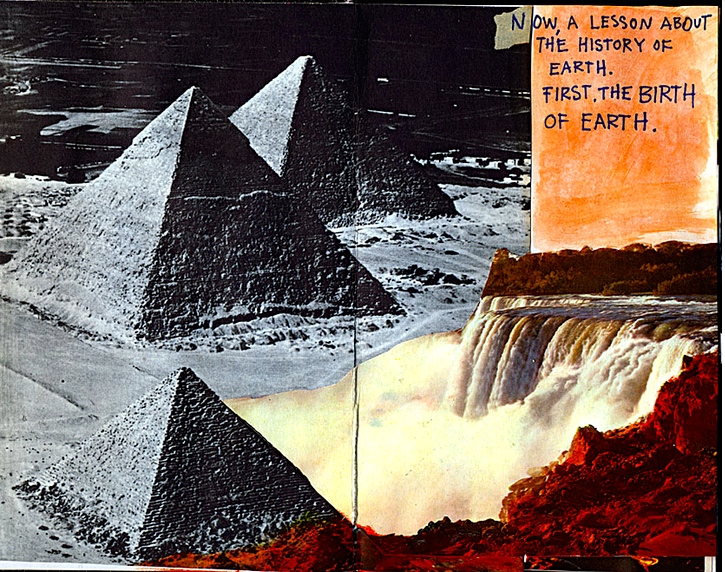When the project was conceived, it was based on what people write on bathroom walls. Not quite collaborative art, but more like public conversations. That said, I love the works of Dan Eldon, and sort of imagined what would happened if people just layered and layered their contributions until you got a density similar to his journals.
MADGES: In an increasingly tech- and text-based world, handwriting has lost some of its former relevance and ubiquity—cursive is no longer even required in U.S. school curricula and thousands of people have never written or received a letter in their entire life. How important is the handwritten aspect of these journal entries to you? How important is the written word to you as an artist?
SOMEGUY: The hand-crafted element is crucial to the journals. It’s almost like a signature, or hint of a person’s personality, beyond the words written. As an artist, for whatever reason, it has a little less meaning to me. Strange, now that I think about it. Perhaps because it’s so accessible and anyone can do it, it feels less precious or unique. Or maybe because I don’t incorporate handwriting into my art work — I’ve never really liked the look of my own handwriting. It’s more like chicken-scratch, which I blame my dad for.
MADGES: Do you keep a journal?
SOMEGUY: No. Yes. Sort of. I don’t keep a journal the way most journal artists do. When I was younger, I kept a journal which was more like a diary of sorts. Now, I have sketchbooks, which I use mostly for notes and ideas. Not really for freeform writing, or artwork, just lists and notes and sketches.
MADGES: As far as I can tell, the 1000 Journals Project was last on exhibition in Scottsdale in 2013. Where is it now? What are your plans for the project? Do you consider yourself its curator anymore?
SOMEGUY: There aren’t any exhibition plans for 1000J right now. A couple years back, I approached a few venues, and while there’s some interest, nothing panned out. As for plans, again, I don’t have any current plans. This is mostly due to time constraints, it takes a lot of energy to keep things going. I do consider myself the curator of the project, but am mostly playing a waiting game.. waiting for journals that have been out in the world for almost 15 years to be rediscovered and sent home. I imagine most are sitting on bookshelves, forgotten over the years.








